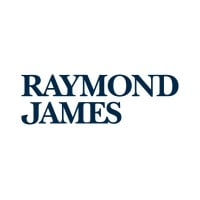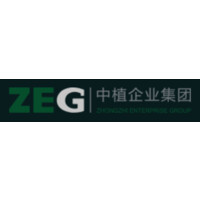
Prudential Financial Company Cyber Security Posture
prudential.comPrudential Financial (NYSE:PRU) was founded on the belief that financial security should be within reach for everyone, and for over 140 years, we have helped our customers reach their potential and tackle life's challenges for now and future generations to come. Today, we are one of the world’s largest financial services institutions, offering individual and institutional clients a wide array of financial products and services. With operations in the United States, Asia, Europe and Latin America, we are known for delivering on our promises to our customers, and are recognized as a trusted brand and one of the world’s most admired companies. We also have one of the most recognized and trusted brand symbols: The Rock®, an icon of strength, stability, expertise and innovation. We measure our long-term success on our ability to deliver value for shareholders, meet customer needs, and attract and develop the best talent in our industry. We offer an inclusive work environment where employees can develop to their full potential, and give back to the communities where we live and work. (Pru.us/disclaimer)
Prudential Financial Company Details
prudential-financial
28205 employees
372246.0
52
Financial Services
prudential.com
413
PRU_2974719
In-progress
Between 900 and 1000
This score is AI-generated and less favored by cyber insurers, who prefer the TPRM score.
 Prudential Financial Global Score
Prudential Financial Global Score.png)

Prudential Financial Company Scoring based on AI Models
| Model Name | Date | Description | Current Score Difference | Score |
|---|---|---|---|---|
| AVERAGE-Industry | 03-12-2025 | This score represents the average cybersecurity rating of companies already scanned within the same industry. It provides a benchmark to compare an individual company's security posture against its industry peers. | N/A | Between 900 and 1000 |
Prudential Financial Company Cyber Security News & History
| Entity | Type | Severity | Impact | Seen | Url ID | Details | View |
|---|---|---|---|---|---|---|---|
| Prudential Financial | Breach | 85 | 4 | 7/2024 | PRU1010070724 | Link | |
Rankiteo Explanation : Attack with significant impact with customers data leaksDescription: Prudential Financial experienced a data breach in February 2024, impacting over 2.5 million individuals. Compromised information included names, addresses, and driver's license numbers. The Alphv/BlackCat ransomware gang claimed responsibility for this breach. Prudential Financial has since offered two years of free credit monitoring services to the affected individuals in an effort to mitigate the consequences of the breach. | |||||||
Prudential Financial Company Subsidiaries

Prudential Financial (NYSE:PRU) was founded on the belief that financial security should be within reach for everyone, and for over 140 years, we have helped our customers reach their potential and tackle life's challenges for now and future generations to come. Today, we are one of the world’s largest financial services institutions, offering individual and institutional clients a wide array of financial products and services. With operations in the United States, Asia, Europe and Latin America, we are known for delivering on our promises to our customers, and are recognized as a trusted brand and one of the world’s most admired companies. We also have one of the most recognized and trusted brand symbols: The Rock®, an icon of strength, stability, expertise and innovation. We measure our long-term success on our ability to deliver value for shareholders, meet customer needs, and attract and develop the best talent in our industry. We offer an inclusive work environment where employees can develop to their full potential, and give back to the communities where we live and work. (Pru.us/disclaimer)
Access Data Using Our API

Get company history
.png)
Prudential Financial Cyber Security News
Prudential Financial Data Breach Class Action
A recent report from the Massachusetts Attorney General's office states that the Prudential Financial data breach occurred due to a cyber ...
Financial Services Company Prudential Financial Says the February Data Breach Impacted 2.5 Million People
The New Jersey-based financial services company Prudential Financial has revealed that the February data breach affected 2.5 million individuals.
Prudential Financial Faces Cybersecurity Breach
The breach exposed administrative and user data from specific IT systems, but there is no evidence of customer or client data compromise.
Prudential Insurance says data of 36,000 exposed during February cyberattack
Prudential Insurance — one of the largest insurers in the United States — said hackers stole the sensitive information of more than 36000 ...
FSCA, Prudential Authority publishes Joint Standard 2 of 2024 on Cybersecurity
It sets out the requirements for sound practices and processes relating to cybersecurity and cyber resilience for financial institutions. The Joint Standard is ...
Prudential Financial finds cybercrims lurking inside its IT systems
Prudential Financial, the second largest life insurance company in the US and eight largest worldwide, is dealing with a digital break-in ...
Prudential Data Breach Impacts More than 2.5 Million People
Prudential Financial has revealed the personal information of over 2.5 million people was compromised in a February data breach.
Prudential Data Breach Victim Count Soars to 2.5M
The company seemingly underestimated the severity of the breach after originally providing a head count of roughly 36000 impacted ...
Prudential Financial Hack: 2.5M Individuals Impacted
Prudential Financial, a leading financial services company, has reported a data breach that has affected over 2.5 million individuals.

Prudential Financial Similar Companies

South China Group
South China Group (“the Group”) is a leading conglomerate with diversified businesses covering wide range of financial services (including asset management, corporate finance, corporate advisory and underwriting services, wealth management, securities, foreign exchange, bullion, financial futures an

Lincoln Financial
Lincoln Financial (NYSE: LNC) helps people to confidently plan for their version of a successful future. We focus on identifying a clear path to financial security, with products including annuities, life insurance, group protection, and retirement plan services. With our 120-year track record of

Raymond James
Founded in 1962 and a public company since 1983, Raymond James Financial, Inc. is a Florida-based diversified holding company providing financial services to individuals, corporations and municipalities through its subsidiary companies engaged primarily in investment and financial planning, in addit

Zhongzhi Enterprise Group Co., Ltd
Founded in 1995, Zhongzhi Enterprise Group ("ZEG") has headquartered in Beijing and currently has more than 10,000 employees. As China's leading asset management group, ZEG adheres to the philosophy of "Growing with Excellent Companies", and gradually develops into a diversified financial services g

Edward Jones
Edward Jones is a leading North American financial services firm in the U.S. and through its affiliate in Canada. The firm’s more than 20,000 financial advisors throughout North America serve more than 9 million clients with a total of $2.2 trillion in client assets under care as of December 31, 202

CITIC Limited
CITIC Limited (SEHK: 00267) is one of China's largest conglomerates and a constituent of the Hang Seng Index. Tracing our roots to the beginning of China’s opening and reform, CITIC has grown in step with the country's rise and modernisation. We have built a remarkable portfolio of businesses in com

Frequently Asked Questions (FAQ) on Cybersecurity Incidents
Prudential Financial CyberSecurity History Information
Total Incidents: According to Rankiteo, Prudential Financial has faced 1 incidents in the past.
Incident Types: The types of cybersecurity incidents that have occurred include ['Breach'].
Total Financial Loss: The total financial loss from these incidents is estimated to be {total_financial_loss}.
Cybersecurity Posture: The company's overall cybersecurity posture is described as Prudential Financial (NYSE:PRU) was founded on the belief that financial security should be within reach for everyone, and for over 140 years, we have helped our customers reach their potential and tackle life's challenges for now and future generations to come. Today, we are one of the world’s largest financial services institutions, offering individual and institutional clients a wide array of financial products and services. With operations in the United States, Asia, Europe and Latin America, we are known for delivering on our promises to our customers, and are recognized as a trusted brand and one of the world’s most admired companies. We also have one of the most recognized and trusted brand symbols: The Rock®, an icon of strength, stability, expertise and innovation. We measure our long-term success on our ability to deliver value for shareholders, meet customer needs, and attract and develop the best talent in our industry. We offer an inclusive work environment where employees can develop to their full potential, and give back to the communities where we live and work. (Pru.us/disclaimer).
Detection and Response: The company detects and responds to cybersecurity incidents through {description_of_detection_and_response_process}.
Incident Details
Incident 1: Ransomware Attack
Title: {Incident_Title}
Description: {Brief_description_of_the_incident}
Date Detected: {Detection_Date}
Date Publicly Disclosed: {Disclosure_Date}
Date Resolved: {Resolution_Date}
Type: {Type_of_Attack}
Attack Vector: {Attack_Vector}
Vulnerability Exploited: {Vulnerability}
Threat Actor: {Threat_Actor}
Motivation: {Motivation}
Incident 2: Data Breach
Title: {Incident_Title}
Description: {Brief_description_of_the_incident}
Date Detected: {Detection_Date}
Date Publicly Disclosed: {Disclosure_Date}
Date Resolved: {Resolution_Date}
Type: {Type_of_Attack}
Attack Vector: {Attack_Vector}
Vulnerability Exploited: {Vulnerability}
Threat Actor: {Threat_Actor}
Motivation: {Motivation}
Common Attack Types: As of now, the company has not encountered any reported incidents involving common cyberattacks.
Identification of Attack Vectors: The company identifies the attack vectors used in incidents through {description_of_identification_process}.
Impact of the Incidents
Incident 1: Ransomware Attack
Financial Loss: {Financial_Loss}
Data Compromised: {Data_Compromised}
Systems Affected: {Systems_Affected}
Downtime: {Downtime}
Operational Impact: {Operational_Impact}
Conversion Rate Impact: {Conversion_Rate_Impact}
Revenue Loss: {Revenue_Loss}
Customer Complaints: {Customer_Complaints}
Brand Reputation Impact: {Brand_Reputation_Impact}
Legal Liabilities: {Legal_Liabilities}
Identity Theft Risk: {Identity_Theft_Risk}
Payment Information Risk: {Payment_Information_Risk}
Incident 2: Data Breach
Financial Loss: {Financial_Loss}
Data Compromised: {Data_Compromised}
Systems Affected: {Systems_Affected}
Downtime: {Downtime}
Operational Impact: {Operational_Impact}
Conversion Rate Impact: {Conversion_Rate_Impact}
Revenue Loss: {Revenue_Loss}
Customer Complaints: {Customer_Complaints}
Brand Reputation Impact: {Brand_Reputation_Impact}
Legal Liabilities: {Legal_Liabilities}
Identity Theft Risk: {Identity_Theft_Risk}
Payment Information Risk: {Payment_Information_Risk}
Average Financial Loss: The average financial loss per incident is {average_financial_loss}.
Commonly Compromised Data Types: The types of data most commonly compromised in incidents are {list_of_commonly_compromised_data_types}.
Incident 1: Ransomware Attack
Entity Name: {Entity_Name}
Entity Type: {Entity_Type}
Industry: {Industry}
Location: {Location}
Size: {Size}
Customers Affected: {Customers_Affected}
Incident 2: Data Breach
Entity Name: {Entity_Name}
Entity Type: {Entity_Type}
Industry: {Industry}
Location: {Location}
Size: {Size}
Customers Affected: {Customers_Affected}
Response to the Incidents
Incident 1: Ransomware Attack
Incident Response Plan Activated: {Yes/No}
Third Party Assistance: {Yes/No}
Law Enforcement Notified: {Yes/No}
Containment Measures: {Containment_Measures}
Remediation Measures: {Remediation_Measures}
Recovery Measures: {Recovery_Measures}
Communication Strategy: {Communication_Strategy}
Adaptive Behavioral WAF: {Adaptive_Behavioral_WAF}
On-Demand Scrubbing Services: {On_Demand_Scrubbing_Services}
Network Segmentation: {Network_Segmentation}
Enhanced Monitoring: {Enhanced_Monitoring}
Incident 2: Data Breach
Incident Response Plan Activated: {Yes/No}
Third Party Assistance: {Yes/No}
Law Enforcement Notified: {Yes/No}
Containment Measures: {Containment_Measures}
Remediation Measures: {Remediation_Measures}
Recovery Measures: {Recovery_Measures}
Communication Strategy: {Communication_Strategy}
Adaptive Behavioral WAF: {Adaptive_Behavioral_WAF}
On-Demand Scrubbing Services: {On_Demand_Scrubbing_Services}
Network Segmentation: {Network_Segmentation}
Enhanced Monitoring: {Enhanced_Monitoring}
Incident Response Plan: The company's incident response plan is described as {description_of_incident_response_plan}.
Third-Party Assistance: The company involves third-party assistance in incident response through {description_of_third_party_involvement}.
Data Breach Information
Incident 2: Data Breach
Type of Data Compromised: {Type_of_Data}
Number of Records Exposed: {Number_of_Records}
Sensitivity of Data: {Sensitivity_of_Data}
Data Exfiltration: {Yes/No}
Data Encryption: {Yes/No}
File Types Exposed: {File_Types}
Personally Identifiable Information: {Yes/No}
Prevention of Data Exfiltration: The company takes the following measures to prevent data exfiltration: {description_of_prevention_measures}.
Handling of PII Incidents: The company handles incidents involving personally identifiable information (PII) through {description_of_handling_process}.
Ransomware Information
Incident 1: Ransomware Attack
Ransom Demanded: {Ransom_Amount}
Ransom Paid: {Ransom_Paid}
Ransomware Strain: {Ransomware_Strain}
Data Encryption: {Yes/No}
Data Exfiltration: {Yes/No}
Ransom Payment Policy: The company's policy on paying ransoms in ransomware incidents is described as {description_of_ransom_payment_policy}.
Data Recovery from Ransomware: The company recovers data encrypted by ransomware through {description_of_data_recovery_process}.
Regulatory Compliance
Incident 1: Ransomware Attack
Regulations Violated: {Regulations_Violated}
Fines Imposed: {Fines_Imposed}
Legal Actions: {Legal_Actions}
Regulatory Notifications: {Regulatory_Notifications}
Incident 2: Data Breach
Regulations Violated: {Regulations_Violated}
Fines Imposed: {Fines_Imposed}
Legal Actions: {Legal_Actions}
Regulatory Notifications: {Regulatory_Notifications}
Regulatory Frameworks: The company complies with the following regulatory frameworks regarding cybersecurity: {list_of_regulatory_frameworks}.
Ensuring Regulatory Compliance: The company ensures compliance with regulatory requirements through {description_of_compliance_measures}.
Lessons Learned and Recommendations
Incident 1: Ransomware Attack
Lessons Learned: {Lessons_Learned}
Incident 2: Data Breach
Lessons Learned: {Lessons_Learned}
Incident 1: Ransomware Attack
Recommendations: {Recommendations}
Incident 2: Data Breach
Recommendations: {Recommendations}
Key Lessons Learned: The key lessons learned from past incidents are {list_of_key_lessons_learned}.
Implemented Recommendations: The company has implemented the following recommendations to improve cybersecurity: {list_of_implemented_recommendations}.
References
Additional Resources: Stakeholders can find additional resources on cybersecurity best practices at {list_of_additional_resources}.
Investigation Status
Incident 1: Ransomware Attack
Investigation Status: {Investigation_Status}
Incident 2: Data Breach
Investigation Status: {Investigation_Status}
Communication of Investigation Status: The company communicates the status of incident investigations to stakeholders through {description_of_communication_process}.
Stakeholder and Customer Advisories
Incident 1: Ransomware Attack
Stakeholder Advisories: {Stakeholder_Advisories}
Customer Advisories: {Customer_Advisories}
Incident 2: Data Breach
Stakeholder Advisories: {Stakeholder_Advisories}
Customer Advisories: {Customer_Advisories}
Advisories Provided: The company provides the following advisories to stakeholders and customers following an incident: {description_of_advisories_provided}.
Initial Access Broker
Incident 1: Ransomware Attack
Entry Point: {Entry_Point}
Reconnaissance Period: {Reconnaissance_Period}
Backdoors Established: {Backdoors_Established}
High Value Targets: {High_Value_Targets}
Data Sold on Dark Web: {Yes/No}
Incident 2: Data Breach
Entry Point: {Entry_Point}
Reconnaissance Period: {Reconnaissance_Period}
Backdoors Established: {Backdoors_Established}
High Value Targets: {High_Value_Targets}
Data Sold on Dark Web: {Yes/No}
Monitoring and Mitigation of Initial Access Brokers: The company monitors and mitigates the activities of initial access brokers through {description_of_monitoring_and_mitigation_measures}.
Post-Incident Analysis
Incident 1: Ransomware Attack
Root Causes: {Root_Causes}
Corrective Actions: {Corrective_Actions}
Incident 2: Data Breach
Root Causes: {Root_Causes}
Corrective Actions: {Corrective_Actions}
Post-Incident Analysis Process: The company's process for conducting post-incident analysis is described as {description_of_post_incident_analysis_process}.
Corrective Actions Taken: The company has taken the following corrective actions based on post-incident analysis: {list_of_corrective_actions_taken}.
Additional Questions
General Information
Ransom Payment History: The company has {paid/not_paid} ransoms in the past.
Last Ransom Demanded: The amount of the last ransom demanded was {last_ransom_amount}.
Last Attacking Group: The attacking group in the last incident was {last_attacking_group}.
Incident Details
Most Recent Incident Detected: The most recent incident detected was on {most_recent_incident_detected_date}.
Most Recent Incident Publicly Disclosed: The most recent incident publicly disclosed was on {most_recent_incident_publicly_disclosed_date}.
Most Recent Incident Resolved: The most recent incident resolved was on {most_recent_incident_resolved_date}.
Impact of the Incidents
Highest Financial Loss: The highest financial loss from an incident was {highest_financial_loss}.
Most Significant Data Compromised: The most significant data compromised in an incident was {most_significant_data_compromised}.
Most Significant System Affected: The most significant system affected in an incident was {most_significant_system_affected}.
Response to the Incidents
Third-Party Assistance in Most Recent Incident: The third-party assistance involved in the most recent incident was {third_party_assistance_in_most_recent_incident}.
Containment Measures in Most Recent Incident: The containment measures taken in the most recent incident were {containment_measures_in_most_recent_incident}.
Data Breach Information
Most Sensitive Data Compromised: The most sensitive data compromised in a breach was {most_sensitive_data_compromised}.
Number of Records Exposed: The number of records exposed in the most significant breach was {number_of_records_exposed}.
Ransomware Information
Highest Ransom Demanded: The highest ransom demanded in a ransomware incident was {highest_ransom_demanded}.
Highest Ransom Paid: The highest ransom paid in a ransomware incident was {highest_ransom_paid}.
Regulatory Compliance
Highest Fine Imposed: The highest fine imposed for a regulatory violation was {highest_fine_imposed}.
Most Significant Legal Action: The most significant legal action taken for a regulatory violation was {most_significant_legal_action}.
Lessons Learned and Recommendations
Most Significant Lesson Learned: The most significant lesson learned from past incidents was {most_significant_lesson_learned}.
Most Significant Recommendation Implemented: The most significant recommendation implemented to improve cybersecurity was {most_significant_recommendation_implemented}.
References
Most Recent Source: The most recent source of information about an incident is {most_recent_source}.
Most Recent URL for Additional Resources: The most recent URL for additional resources on cybersecurity best practices is {most_recent_url}.
Investigation Status
Current Status of Most Recent Investigation: The current status of the most recent investigation is {current_status_of_most_recent_investigation}.
Stakeholder and Customer Advisories
Most Recent Stakeholder Advisory: The most recent stakeholder advisory issued was {most_recent_stakeholder_advisory}.
Most Recent Customer Advisory: The most recent customer advisory issued was {most_recent_customer_advisory}.
Initial Access Broker
Most Recent Entry Point: The most recent entry point used by an initial access broker was {most_recent_entry_point}.
Most Recent Reconnaissance Period: The most recent reconnaissance period for an incident was {most_recent_reconnaissance_period}.
Post-Incident Analysis
Most Significant Root Cause: The most significant root cause identified in post-incident analysis was {most_significant_root_cause}.
Most Significant Corrective Action: The most significant corrective action taken based on post-incident analysis was {most_significant_corrective_action}.
What Do We Measure?
















Every week, Rankiteo analyzes billions of signals to give organizations a sharper, faster view of emerging risks. With deeper, more actionable intelligence at their fingertips, security teams can outpace threat actors, respond instantly to Zero-Day attacks, and dramatically shrink their risk exposure window.
These are some of the factors we use to calculate the overall score:
Identify exposed access points, detect misconfigured SSL certificates, and uncover vulnerabilities across the network infrastructure.
Gain visibility into the software components used within an organization to detect vulnerabilities, manage risk, and ensure supply chain security.
Monitor and manage all IT assets and their configurations to ensure accurate, real-time visibility across the company's technology environment.
Leverage real-time insights on active threats, malware campaigns, and emerging vulnerabilities to proactively defend against evolving cyberattacks.




